Discovering Your Artistic Talent Through Painting and Drawing
Have you ever looked at a blank canvas or a sheet of paper and felt a rush of excitement mixed with a hint of fear? That’s completely normal! Painting and drawing are not just hobbies; they are profound journeys that allow us to explore our inner selves and express emotions we might not even know we have. Whether you're a complete novice or someone who’s dabbled in art for years, there’s always a new layer to uncover, a new technique to master, or a new story to tell through your art.
Imagine stepping into a world where colors dance and lines tell stories. Painting and drawing can transform your thoughts and feelings into visual expressions, making your imagination come alive. It’s like having a conversation with yourself, where every stroke of the brush or pencil reveals a little more about who you are. But how do you start this journey? How can you tap into your artistic talent and let it flourish?
This article is here to guide you through the process of discovering your artistic abilities. We'll explore the many benefits of painting and drawing, from enhancing your creativity to improving your mental health. You’ll learn about the different mediums available, helping you choose the right one that resonates with your personal style. We’ll also discuss essential techniques and tools that can elevate your artwork, making the process not just enjoyable but also rewarding.
So, are you ready to dive into the colorful world of art? Let’s embark on this exciting adventure together, where you’ll not only uncover your artistic talents but also gain a deeper appreciation for the beauty of self-expression. Whether you want to paint a serene landscape, sketch a bustling city scene, or create abstract art that speaks to your soul, the possibilities are endless. Grab your brushes and pencils, and let’s get started!

The Benefits of Painting and Drawing
Engaging in painting and drawing is more than just a hobby; it’s a profound journey that can enhance your life in numerous ways. Have you ever felt that exhilarating rush when you create something beautiful with your own hands? That's the magic of art! Not only does it allow for self-expression, but it also offers a multitude of benefits that can improve your mental, emotional, and even physical well-being.
One of the most significant advantages of painting and drawing is the positive impact on mental health. Studies have shown that engaging in creative activities can reduce stress, anxiety, and depression. When you focus on creating art, your mind shifts away from daily worries, allowing you to immerse yourself in the moment. It's like a form of meditation, where each brushstroke or pencil line helps to clear your mind and center your thoughts.
Moreover, painting and drawing can significantly enhance your creativity. When you experiment with colors, shapes, and techniques, you are not just creating art; you are also training your brain to think outside the box. This creative thinking can spill over into other areas of your life, improving problem-solving skills and encouraging innovative thinking in your personal and professional endeavors.
Another remarkable benefit is the sense of personal fulfillment that comes from creating art. There’s a unique satisfaction in seeing your ideas come to life on canvas or paper. Completing a piece of art can boost your confidence and self-esteem, making you feel accomplished. This sense of achievement can ignite a passion for further artistic exploration, creating a positive feedback loop that encourages you to keep creating.
Additionally, painting and drawing can foster social connections. Whether you join an art class, attend workshops, or simply share your artwork online, these activities can help you meet like-minded individuals who share your passion. Engaging with a community of artists can provide support, inspiration, and constructive feedback, enriching your artistic journey.
Finally, let’s not overlook the physical benefits. While it might not seem obvious at first, the act of painting and drawing can improve fine motor skills and hand-eye coordination. The more you practice, the more you refine your dexterity and control, which can be beneficial in various aspects of life.
In summary, the benefits of painting and drawing are vast and varied. From enhancing mental health and creativity to providing a sense of fulfillment and fostering social connections, these artistic practices can significantly enrich your life. So, why not pick up a brush or pencil today? You might just discover a whole new world of possibilities!
- How does painting help with stress relief?
Painting allows you to focus on the creative process, which can distract you from stressors and promote relaxation.
- Can anyone learn to paint or draw?
Absolutely! With practice and dedication, anyone can learn to express themselves through art.
- What materials do I need to start painting?
Starting with basic materials like watercolor or acrylic paints, brushes, and canvas or paper is sufficient. You can expand your toolkit as you progress.

Choosing the Right Medium
When it comes to expressing your artistic vision, choosing the right medium is like picking the perfect instrument for a symphony. Each medium offers a unique way to convey emotions, ideas, and stories, and understanding these differences can significantly enhance your creative journey. Whether you’re a budding artist or a seasoned pro, selecting the right tools can make all the difference in how your artwork turns out. So, let’s dive into the various options available and help you find the one that resonates with your style.
First up, we have the classic choice of paints. There are several types, each with its own characteristics:
- Watercolor: Known for its transparency and fluidity, watercolor paints are perfect for creating soft washes and delicate details.
- Acrylic: These paints are versatile, quick-drying, and vibrant, making them ideal for layering and bold expressions.
- Oil: Renowned for their richness and depth, oil paints allow for extensive blending and slow drying times, offering artists the flexibility to work on their pieces over longer periods.
Choosing between these mediums often comes down to personal preference and the type of artwork you want to create. For instance, if you enjoy working quickly and love vibrant colors, acrylics might be your best bet. However, if you prefer a more traditional approach and enjoy the process of layering, oil paints could be your go-to. Watercolors, on the other hand, are fantastic for those who appreciate subtlety and a more organic feel in their art.
To help you make an informed decision, let's compare watercolor and acrylic paints:
| Feature | Watercolor | Acrylic |
|---|---|---|
| Drying Time | Slow | Fast |
| Transparency | High | Low to Medium |
| Texture | Fluid | Thick and Textured |
| Cleanup | Water-based | Water-based |
This table illustrates how each medium can cater to different artistic needs and preferences. It’s essential to experiment with both to see which one feels more natural to you. Remember, art is about exploration, and the right medium can help you express your creativity in ways you never imagined.
In addition to paints, you’ll also want to consider the drawing materials that suit your artistic style. Pencils, charcoal, pastels, and inks each offer unique textures and finishes. For example, charcoal provides a rich, dark line that can be smudged for dramatic effects, while colored pencils allow for precision and detail.
Ultimately, the right medium is the one that resonates with you personally. Don't hesitate to mix and match! Many artists thrive on combining different mediums to create unique textures and effects. So, grab a brush, a pencil, or even a palette knife, and start experimenting. Your artistic voice is waiting to be discovered!
Q: How do I know which medium is best for me?
A: The best way to find your ideal medium is through experimentation. Try out different paints and drawing materials to see which ones you enjoy working with the most.
Q: Can I mix different mediums in one artwork?
A: Absolutely! Many artists successfully combine mediums to achieve unique textures and effects. Just be mindful of the drying times and properties of each medium.
Q: What if I don’t have access to professional materials?
A: Don’t worry! Many great artists started with simple materials. Focus on what you have, and remember that creativity is more about your vision than the tools you use.
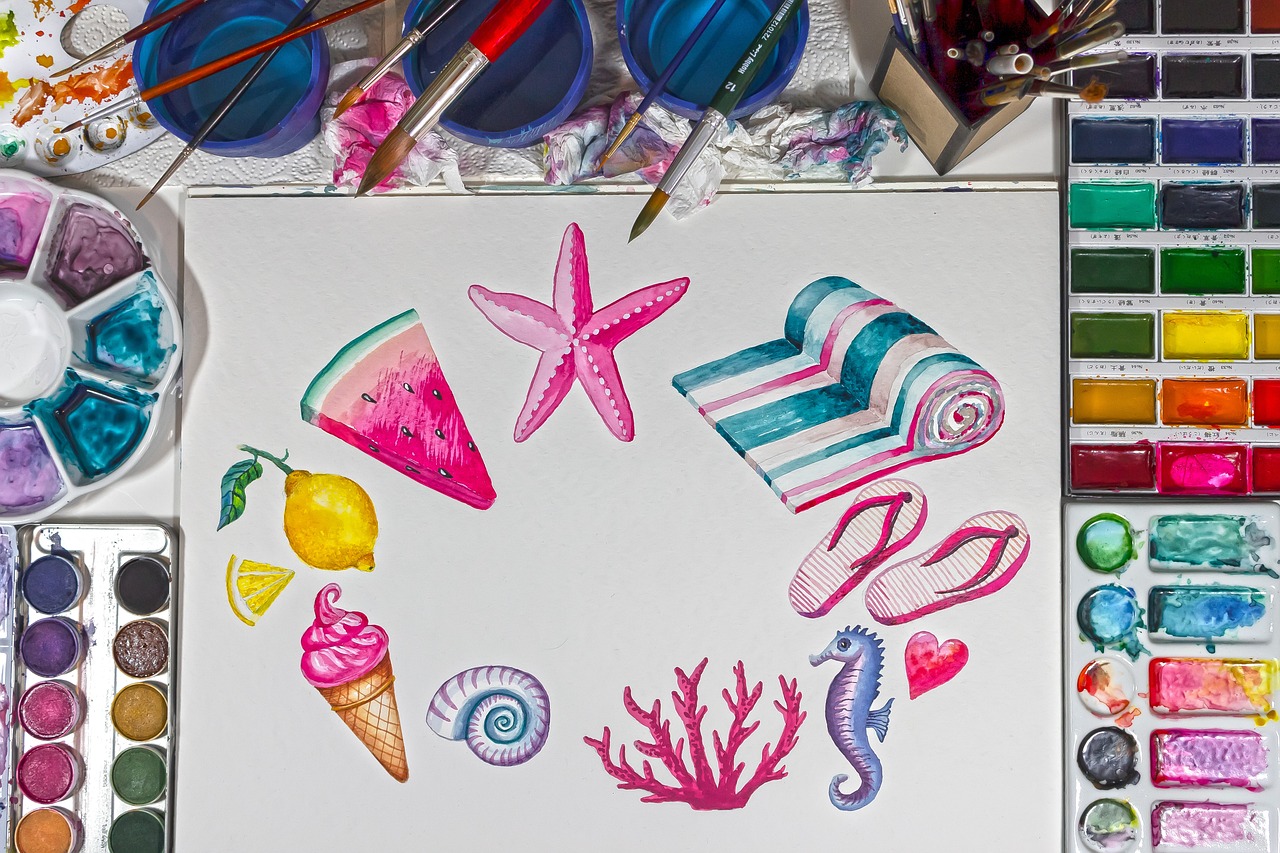
Watercolor vs. Acrylic
When it comes to choosing between watercolor and acrylic paints, it's like deciding between a gentle breeze and a powerful storm—both have their unique charm and challenges. Watercolors are known for their delicate transparency and the way they can create soft, ethereal washes of color. They require a certain finesse, as the paint interacts with water and paper, allowing for beautiful gradients and fluidity. On the other hand, acrylics are bold and vibrant, offering a wide range of possibilities from thick, textured applications to smooth, glossy finishes. They dry quickly, enabling artists to layer colors and build up their work without long waiting periods.
Each medium has its own set of characteristics that can influence your artistic journey. For instance, watercolors can sometimes be unpredictable; a drop of water can change the entire outcome of your piece, making it a thrilling yet challenging medium. In contrast, acrylics provide a more forgiving experience, allowing for corrections and adjustments as you go. This can be particularly appealing for beginners who might feel intimidated by the fluid nature of watercolors.
To help you better understand the differences, here’s a quick comparison table:
| Feature | Watercolor | Acrylic |
|---|---|---|
| Transparency | High | Variable |
| Drying Time | Slow | Fast |
| Cleanup | Water-based | Water-based |
| Layering | Challenging | Easy |
| Texture | Soft and fluid | Thick and textured |
Ultimately, the choice between watercolor and acrylic paints boils down to your personal preferences and artistic goals. If you enjoy the unpredictability and soft effects of washes, then watercolor might be your best bet. However, if you’re looking for a medium that allows for vibrant colors and quick layering, acrylics could be the way to go. There's no right or wrong choice here; it's all about what resonates with you as an artist.
So, why not experiment with both? You might find that switching between mediums sparks new ideas and creativity in your artwork. The beauty of art lies in its ability to evolve, just like you do as an artist!
- Can I mix watercolor and acrylic paints?
While it's generally not recommended to mix the two directly, you can use them in the same piece by layering them appropriately. Just make sure to let the first layer dry completely before applying the second. - Which medium is better for beginners?
Acrylics are often considered more beginner-friendly due to their quick drying time and versatility. However, if you are drawn to the effects of watercolor, don’t hesitate to start with it! - How do I choose the right paper for watercolors?
Look for watercolor paper that is thick (at least 200 gsm) and has a textured surface to help absorb the water and pigment effectively.
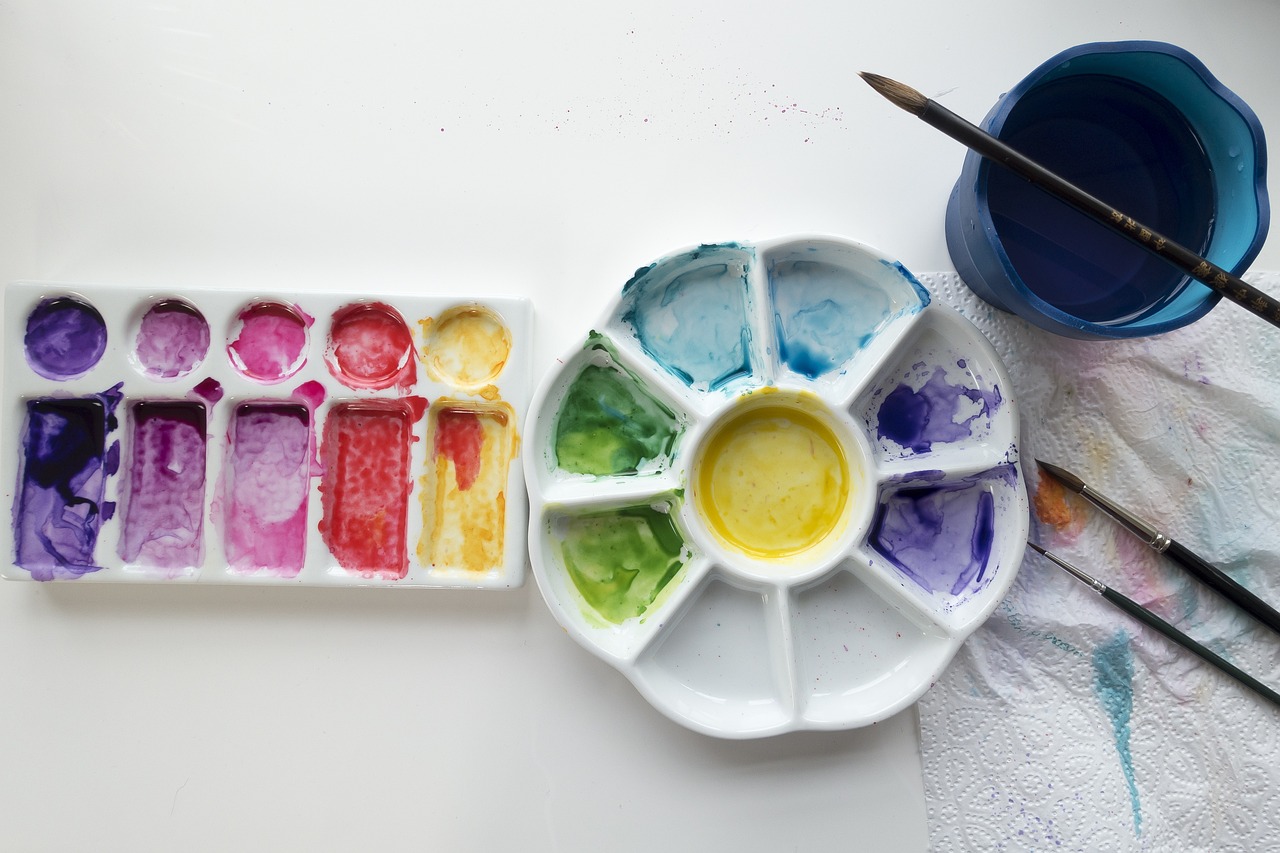
Techniques for Watercolor Painting
Watercolor painting is a captivating medium that invites artists to explore the delicate interplay between water and pigment. To truly master this art form, it's essential to understand various techniques that can elevate your work from simple washes to breathtaking masterpieces. One of the most popular techniques is wet-on-wet, where wet paint is applied onto a wet surface. This method allows colors to blend seamlessly, creating soft edges and dreamy backgrounds. Imagine a serene landscape where the colors flow into one another like a gentle stream—this is the magic of wet-on-wet!
Another fundamental technique is dry brush, which involves using a dry brush to apply paint to dry paper. This method creates texture and sharp edges, perfect for adding details or capturing the roughness of natural elements like tree bark or rocky surfaces. Think of it as the difference between a smooth, flowing river and a rugged mountain range; both are beautiful, but each tells a different story through the brushwork.
For those looking to add depth to their watercolor paintings, glazing is an invaluable technique. Glazing involves applying a thin layer of transparent paint over a dried layer, allowing the colors beneath to shine through. This technique can create luminous effects, much like how sunlight filters through leaves, casting intricate patterns on the ground. By layering colors, you can achieve a vibrant and rich palette that adds complexity to your artwork.
Additionally, lifting is a technique that allows you to remove paint from the paper, creating highlights or correcting mistakes. This is done by wetting the area with clean water and gently blotting it with a paper towel or a clean brush. It's like sculpting with light; you can bring out highlights that were hidden beneath layers of paint, adding a dynamic quality to your piece.
Lastly, don’t forget about masking techniques! Using masking fluid can protect certain areas of your paper from paint, allowing you to preserve the white of the paper for highlights or intricate details. This technique is akin to wearing a raincoat on a rainy day; it keeps your essential elements safe from the elements of paint!
Incorporating these techniques into your watercolor practice can significantly enhance your skills and creativity. Each method offers unique possibilities, encouraging you to experiment and find your artistic voice. So grab your brushes, unleash your imagination, and let the watercolors flow!
- What is the best paper for watercolor painting?
The best paper for watercolor painting is typically cold-pressed (not hot-pressed) watercolor paper, which has a textured surface that holds water well.
- Can I use regular paintbrushes for watercolor?
While you can use regular paintbrushes, it’s recommended to use brushes specifically designed for watercolor, as they are made to hold more water and pigment.
- How do I prevent my colors from becoming muddy?
To prevent muddy colors, make sure to clean your brush thoroughly between colors and allow layers to dry before adding more paint.
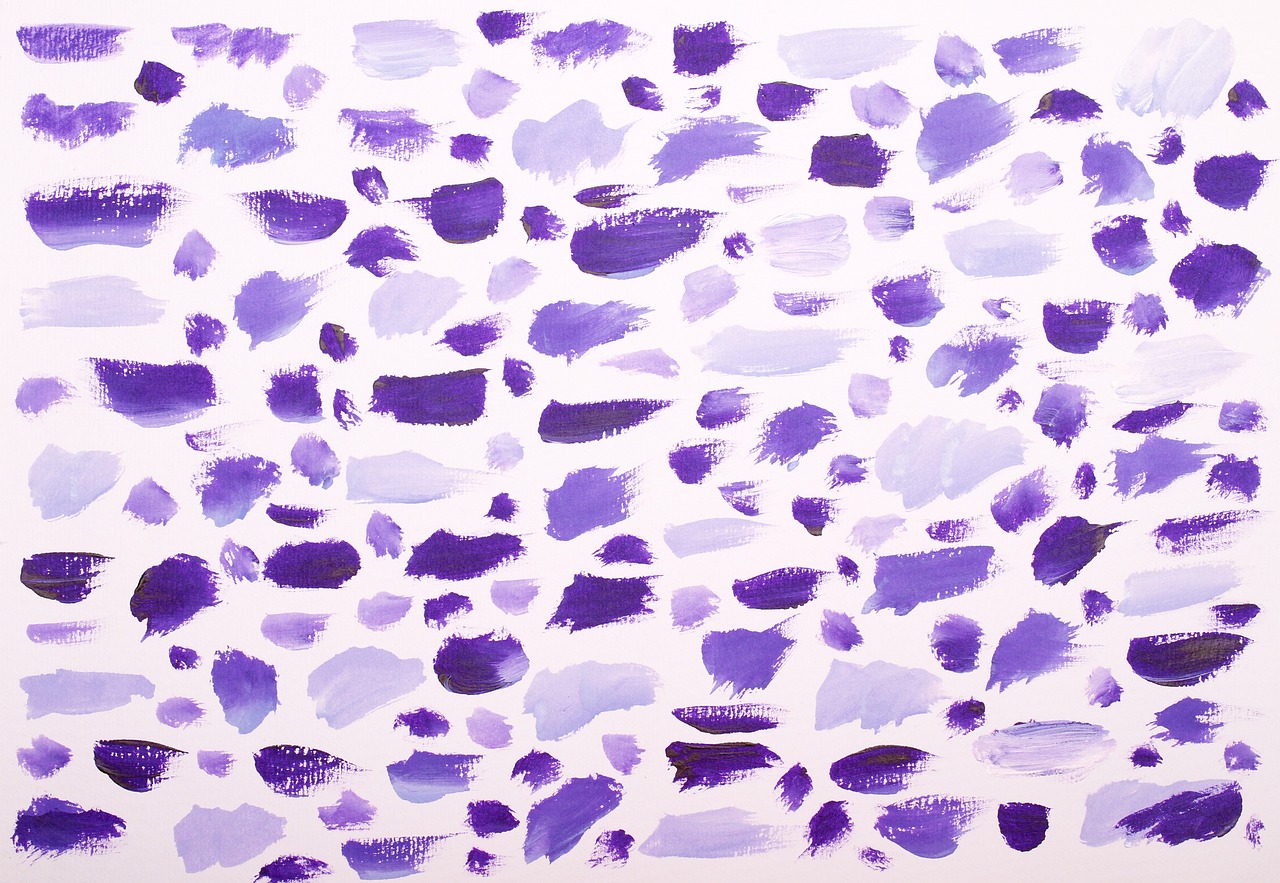
Techniques for Acrylic Painting
Acrylic painting is like a playground for artists, offering a vibrant array of colors and an incredible amount of versatility. If you're just diving into this medium or looking to refine your skills, understanding the various techniques can elevate your artwork to new heights. One of the most popular methods is layering. This technique involves applying multiple layers of paint to create depth and dimension in your work. Think of it as building a cake; each layer adds richness and complexity, allowing your colors to interact and shine through.
Another effective technique is glazing, where you apply a transparent layer of paint over a dry layer. This method can create luminous effects and enhance the vibrancy of your colors. Imagine the way sunlight filters through leaves, casting beautiful hues on the ground below. That's the kind of effect you can achieve with glazing. It’s particularly useful for portraits or landscapes, where subtle shifts in color can bring a scene to life.
For those who enjoy a more spontaneous approach, wet-on-wet is an exhilarating technique. As the name suggests, this involves applying wet paint onto wet paint. The colors blend beautifully, allowing for soft edges and an ethereal quality in your work. It's akin to dancing with your brush, letting the paint flow freely and create unexpected results. This technique is perfect for creating dreamy backgrounds or abstract pieces where fluidity is key.
Don't forget about the dry brush technique, which is fantastic for adding texture. By using a dry brush with minimal paint, you can create scratchy, textured effects that can mimic everything from rough tree bark to delicate fur. It's like adding the final touches to a masterpiece, giving it character and depth.
To help you better understand these techniques, here's a quick comparison in table format:
| Technique | Description | Best For |
|---|---|---|
| Layering | Applying multiple layers of paint for depth. | Creating dimension and richness. |
| Glazing | Applying a transparent layer over dry paint. | Enhancing vibrancy and luminosity. |
| Wet-on-Wet | Applying wet paint onto wet paint. | Soft edges and blending colors. |
| Dry Brush | Using a dry brush with minimal paint. | Adding texture and detail. |
As you explore these techniques, remember that practice is key. Don’t be afraid to experiment and make mistakes; every stroke is a step towards discovering your unique artistic voice. Acrylics are forgiving, allowing you to layer and adjust as you go. So grab your brushes and let your creativity flow!
1. What is the best way to start with acrylic painting?
Start with simple subjects, like still life or landscapes, and practice the basic techniques. Don’t hesitate to watch tutorials or take a class for guidance.
2. How do I clean my brushes after using acrylic paint?
Acrylic paint can dry quickly, so it’s best to clean your brushes immediately. Use warm water and soap to remove the paint, and reshape the bristles before letting them dry.
3. Can I use acrylics on paper?
Absolutely! Just make sure to use thicker paper or canvas paper designed for acrylics to prevent warping.
4. How do I make my acrylic paint more fluid?
You can add a medium or water to your acrylic paint to achieve a more fluid consistency. However, be cautious not to dilute it too much, as it may affect the pigment's vibrancy.
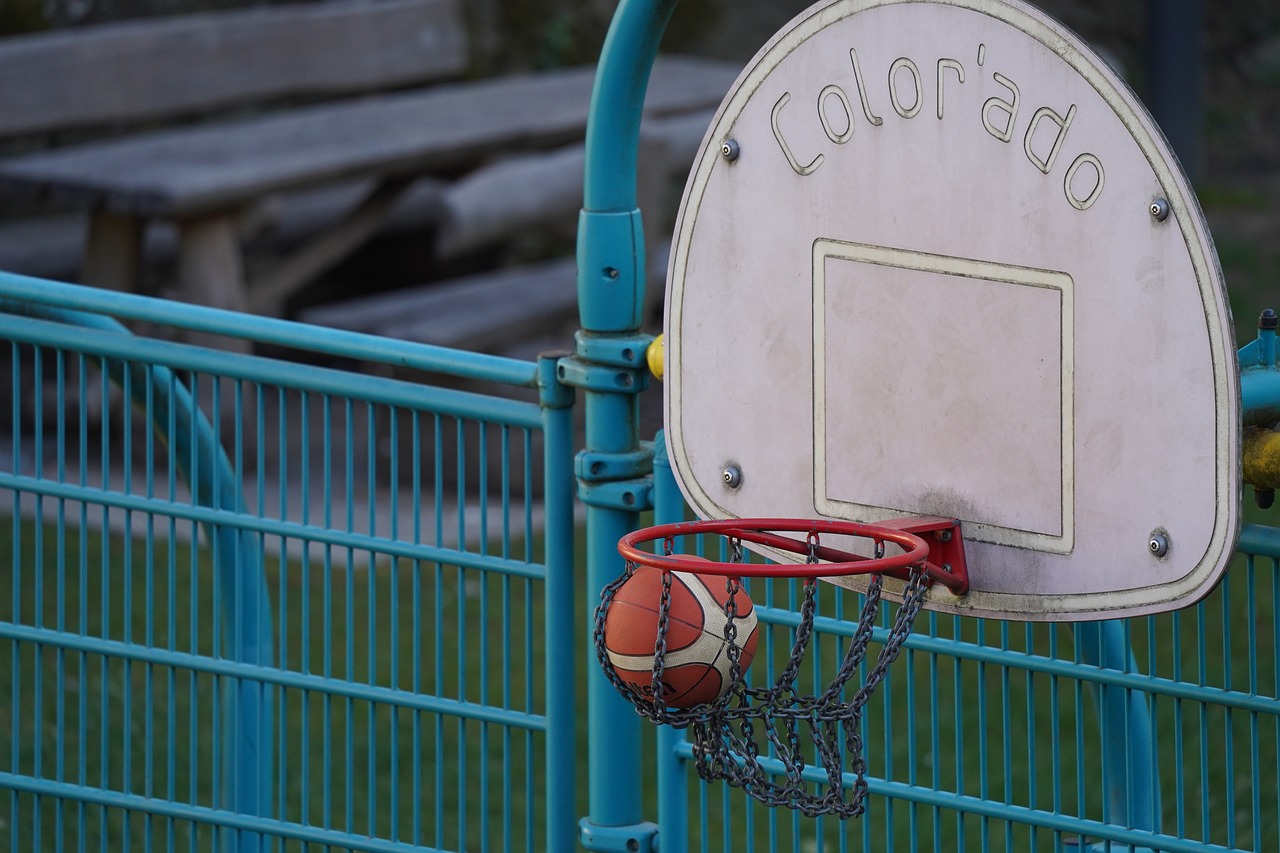
Choosing the Right Paper and Canvas
When it comes to creating stunning artwork, the surface you choose to work on can make all the difference. Whether you're a budding artist or a seasoned pro, understanding the characteristics of different types of paper and canvas is crucial for achieving the results you desire. The right choice not only enhances your creativity but also ensures that your artwork stands the test of time. So, how do you navigate this sea of options? Let’s dive in!
First, let's talk about paper. The type of paper you select can greatly influence the outcome of your drawings or paintings. For instance, if you're working with watercolors, you’ll want to opt for heavier, textured paper that can absorb water without warping. A common choice is cold-pressed watercolor paper, which has a rough texture that captures the paint beautifully. On the other hand, if you're sketching with pencils or charcoal, a smoother paper, like bristol board, may be more suitable.
Here’s a quick reference table to help you understand the different types of paper:
| Paper Type | Best For | Texture |
|---|---|---|
| Cold-Pressed Watercolor Paper | Watercolor Painting | Rough |
| Hot-Pressed Watercolor Paper | Fine Detail Work | Smooth |
| Bristol Board | Pencil/Charcoal Drawing | Smooth |
| Mixed Media Paper | Versatile Use | Varies |
Now, let’s not forget about canvas! Canvas is a popular choice for acrylic and oil painting, and it offers a different feel and finish compared to paper. When selecting a canvas, consider the weight and texture. A heavier canvas can hold more paint and withstand the manipulation of various techniques, while a smoother canvas is ideal for detailed work. You can choose between pre-stretched canvases or canvas boards, depending on your preference.
In addition to these factors, think about the size of your canvas or paper. Larger surfaces allow for more freedom and expression, while smaller ones can be great for practicing techniques or creating quick studies. Ultimately, the choice comes down to your personal style and the message you wish to convey through your art.
So, as you embark on your artistic journey, remember that the right paper and canvas can elevate your work to new heights. Don’t hesitate to experiment with different surfaces to find what resonates with you. After all, art is about exploration and self-discovery!
- What type of paper is best for beginners? For beginners, a mixed media paper is a great choice as it can handle various mediums.
- Can I use acrylic paint on paper? Yes, you can use acrylic paint on thicker paper, but it's best to choose paper specifically designed for acrylics.
- How do I prevent my watercolor paper from warping? Using heavier weight paper (at least 200 gsm) and stretching it before painting can help prevent warping.
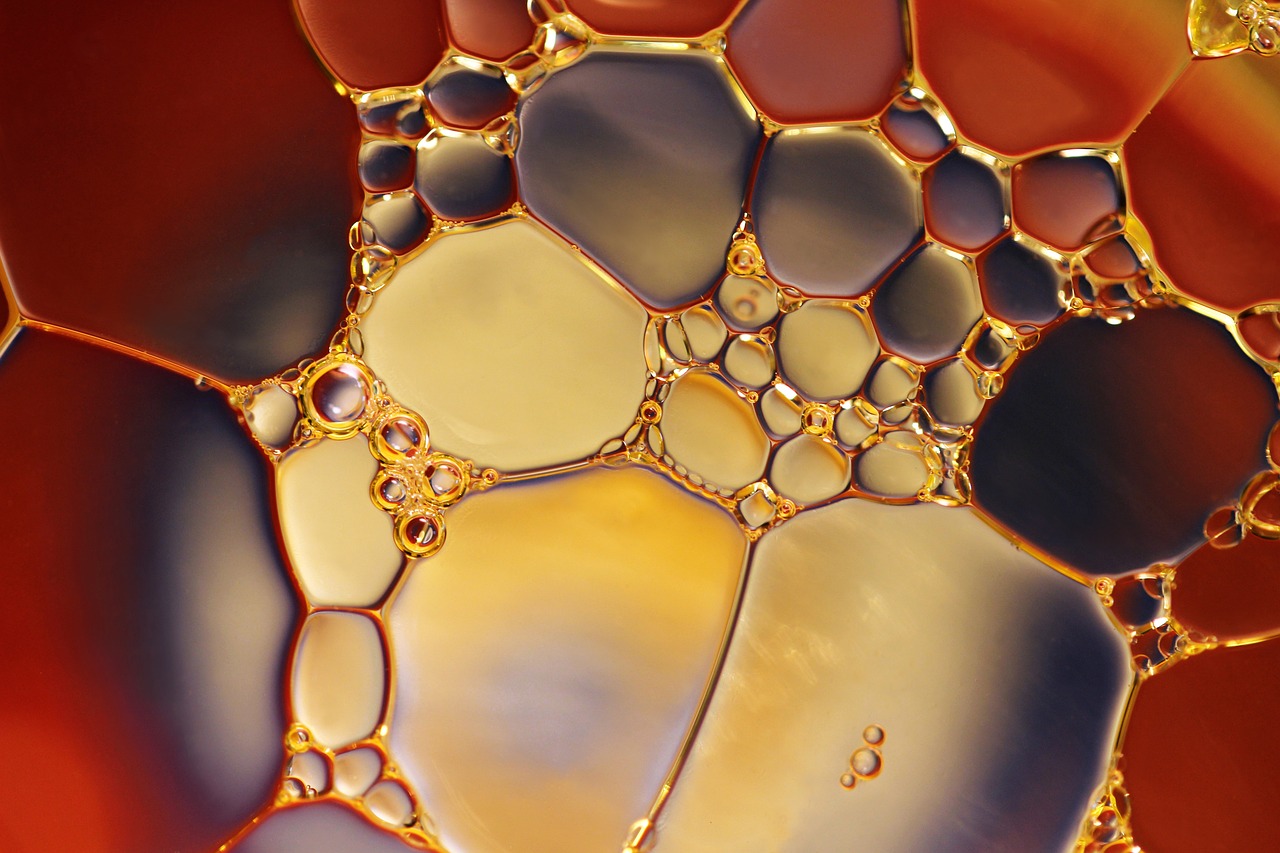
Finding Your Artistic Style
Developing a unique artistic style is not just about what you create; it’s about how you express yourself through your art. It’s like finding your voice in a crowded room—everyone has something to say, but it’s your unique perspective that will make people listen. So, how do you go about discovering this personal style? The journey begins with experimentation and observation.
First, let’s talk about experimentation. Don’t be afraid to dive into different techniques and mediums. Think of it as trying on clothes; some styles will fit perfectly, while others may feel awkward. You might start with traditional methods like drawing or painting, but don’t hesitate to explore mixed media or digital art. Each approach can reveal something new about your preferences and capabilities. For instance, while you might love the fluidity of watercolor, you could find that the boldness of acrylics resonates more with your personality.
Next, observation plays a crucial role in finding your artistic voice. Spend time studying various art forms and artists. This doesn’t mean you should copy them; rather, look for elements that inspire you. Ask yourself questions like, “What draws me to this piece?” or “How does this artist convey emotion?” You can create a mood board or a collection of images that reflect what you love. This can serve as a visual guide as you develop your style. Remember, art is subjective, and what speaks to you may not speak to someone else, and that’s perfectly okay!
As you experiment and observe, keep in mind that your artistic style will evolve over time. It’s a living, breathing entity that reflects your growth as an artist. Don’t be discouraged if you feel like you haven’t found your style yet. Even seasoned artists go through phases where they feel lost or uninspired. Embrace those moments; they often lead to breakthroughs. Consider keeping a journal where you jot down your thoughts, sketches, and inspirations. This can help you track your evolution and identify patterns in your work.
Lastly, don’t forget to share your work with others. Feedback can be invaluable. Join local art communities or online forums where you can showcase your pieces. Engaging with fellow artists can provide fresh perspectives and encouragement. Remember, art is not created in isolation; it thrives in community. As you share and receive feedback, you’ll start to see which aspects of your work resonate with others, helping you refine your style even further.
In summary, finding your artistic style is a journey filled with exploration, observation, and community engagement. Embrace the process, and don’t rush it. Your unique voice will emerge as you continue to create and connect with the world around you.
- How long does it take to find my artistic style?
Finding your artistic style is a personal journey; it can take weeks, months, or even years. Be patient and enjoy the process! - Should I stick to one medium?
No! Experimenting with different mediums can help you discover what you enjoy most and what best expresses your artistic voice. - How can I get feedback on my work?
Join art communities, both online and offline. Share your work on social media or participate in local art shows.

Experimenting with Different Techniques
When it comes to discovering your artistic voice, is not just beneficial; it's absolutely essential! Think of it as a culinary adventure where you mix flavors until you find the perfect recipe that tantalizes your taste buds. In the world of art, this means trying out various styles and methods to see what resonates with you and your creative spirit.
Whether you're a beginner or a seasoned artist, stepping outside your comfort zone can lead to exciting discoveries. For instance, you might start with traditional techniques like realism and then find yourself drawn to the expressive nature of abstract art. This journey of exploration allows you to develop a unique style that reflects your personality and emotions.
To truly embrace this experimentation, consider diving into a few different categories of techniques:
- Brushwork: Experiment with various brush types and strokes. A stiff-bristled brush can produce bold textures, while a soft brush can create delicate washes.
- Mixed Media: Combine different materials such as pastels, charcoal, and paint. This approach can add depth and intrigue to your artwork.
- Color Theory: Play with color combinations and contrasts. Understanding how colors interact can elevate your work from ordinary to extraordinary.
Another exciting avenue to explore is technique blending. Imagine merging the fluidity of watercolor with the boldness of acrylics. This fusion can yield stunning results that surprise even you! Don’t shy away from making mistakes; often, the most captivating pieces arise from unexpected accidents. Remember, every artist has their own journey, and it's okay to take detours along the way.
As you explore these techniques, keep a sketchbook handy to jot down your thoughts, successes, and even your failures. This practice not only helps you track your progress but also serves as a treasure trove of ideas for future projects. You might find inspiration in a simple line or a splash of color that you can build upon later.
Lastly, don't forget to seek inspiration from the art community! Attend workshops, join online forums, or simply share your work on social media. The feedback and encouragement you receive can be invaluable as you navigate your artistic journey. So, grab your brushes, unleash your creativity, and let the world see the magic that unfolds when you experiment with different techniques!
- How do I know which techniques to try? Start by researching various styles and techniques online or through art books. Experiment with a few that catch your interest and see what feels right for you.
- Is it okay to mix different mediums? Absolutely! Mixing mediums can lead to unique results and help you discover new aspects of your artistic style.
- How can I overcome creative blocks while experimenting? Take breaks, change your environment, or try a completely different activity to refresh your mind. Sometimes stepping away can lead to new ideas.

Studying Influential Artists
When it comes to nurturing your artistic talent, one of the most profound ways to enhance your creativity is by . These individuals have paved the way for modern art, each contributing unique perspectives and techniques that can inspire your own practice. Think of their works as a treasure trove of ideas waiting to be explored. By diving into their lives and art, you can uncover not only valuable skills but also the passion that fuels their creativity.
Every artist has a story, and understanding these narratives can provide you with a deeper appreciation for their work. For instance, consider the emotional depth in Vincent van Gogh's paintings, which stemmed from his turbulent life experiences. His use of color and brushwork can motivate you to express your own emotions through art. Similarly, studying the meticulous techniques of Leonardo da Vinci can inspire you to pay attention to detail and composition in your own pieces.
Moreover, examining various art movements can help you identify styles and themes that resonate with you. Whether it's the vibrant colors of the Impressionists or the bold forms of Abstract Expressionism, each movement offers a different lens through which to view the world. Here’s a brief overview of some influential artists and their contributions:
| Artist | Movement | Key Contributions |
|---|---|---|
| Vincent van Gogh | Post-Impressionism | Emotional use of color, dynamic brushwork |
| Leonardo da Vinci | Renaissance | Realism, chiaroscuro technique |
| Pablo Picasso | Cubism | Revolutionized perspective in art |
| Frida Kahlo | Surrealism | Personal narrative, symbolism |
As you explore the works of these artists, try to analyze what makes their art resonate with you. Ask yourself questions like, "What emotions does this piece evoke?" or "How did they achieve that effect?" This reflective practice can significantly enhance your understanding and appreciation of art.
Additionally, don't hesitate to incorporate some of their techniques into your own work. For example, if you admire the way Georgia O'Keeffe captures the essence of flowers, experiment with her style in your own floral paintings. This practice not only honors the artists who inspire you but also allows you to develop your own voice.
In conclusion, studying influential artists is not just about admiration; it’s about integration and evolution. By learning from their experiences, techniques, and styles, you can refine your artistic skills and cultivate a more profound sense of personal expression. So grab your sketchbook, explore the works of these masters, and let their creativity ignite your own!
- How can I start studying influential artists? Begin by researching artists that resonate with you, visiting museums, or reading books about their techniques and lives.
- What should I look for when studying an artist's work? Pay attention to their use of color, composition, and the emotions their work evokes. Consider how their life experiences influenced their art.
- Can I use techniques from influential artists in my own work? Absolutely! Incorporating their techniques can help you develop your style while paying homage to their influence.
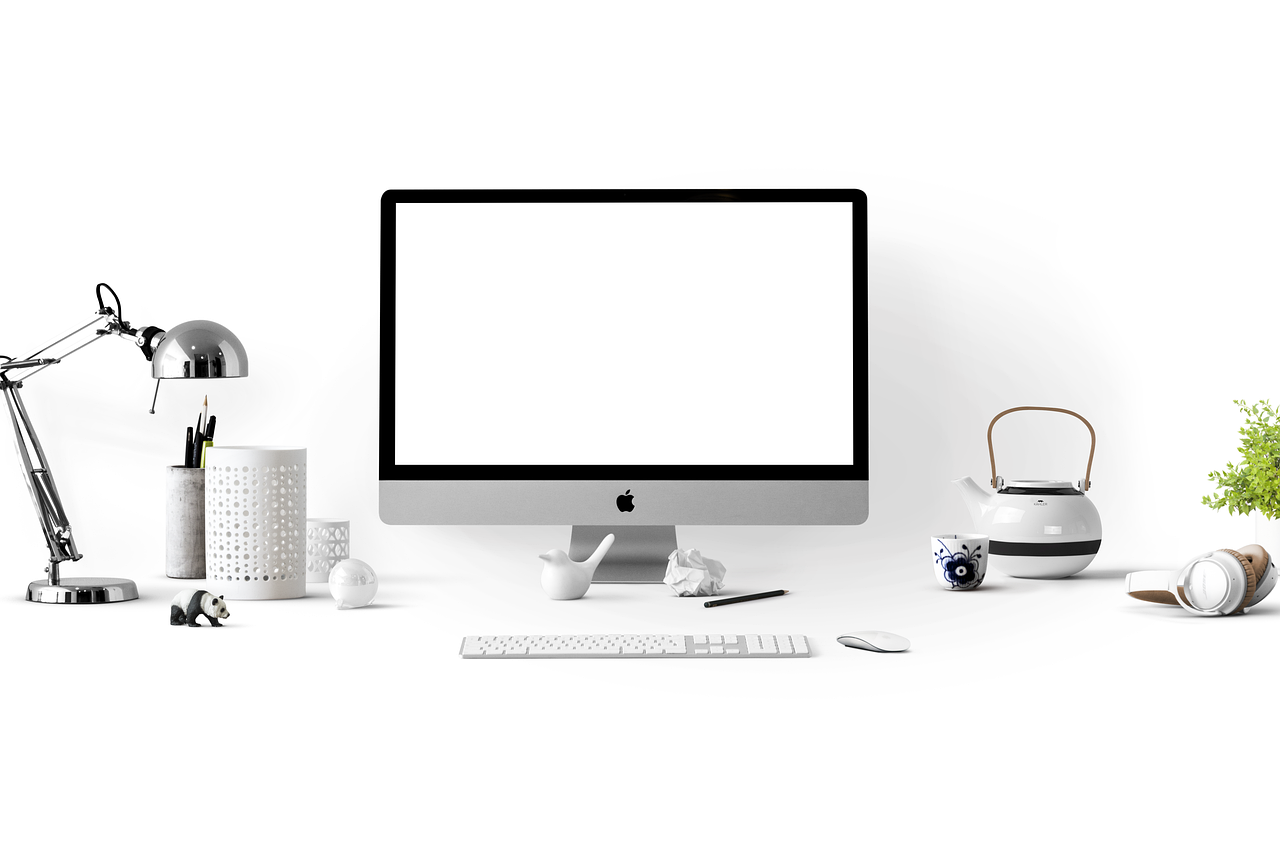
Setting Up Your Creative Space
Creating a conducive environment for painting and drawing is essential for productivity and inspiration. Imagine walking into a space that feels like an artist's haven, where every corner whispers creativity and every surface invites you to explore your artistic talents. The right setup can make all the difference, transforming your creative process from a chore into a joyful adventure. So, how do you craft such a space? Let’s dive into some key elements that will help you establish an inspiring and organized workspace.
First and foremost, consider the **lighting**. Natural light is a game-changer for artists. It not only illuminates your work but also enhances your mood and helps you see colors more accurately. If possible, position your easel or drawing table near a window. However, if natural light is limited, invest in good quality artificial lighting. Look for daylight bulbs that mimic the sun’s brightness to keep your colors vibrant and true.
Next, let’s talk about **organization**. A cluttered space can stifle creativity, so it’s vital to keep your materials organized. Use shelves, drawers, and containers to categorize your supplies. For instance, you might have one area dedicated to paints, another for brushes, and a separate zone for sketchbooks and papers. This not only saves you time searching for materials but also creates a visually appealing environment that can ignite your inspiration. Here’s a simple table to illustrate how you might organize your supplies:
| Category | Supplies | Storage Solution |
|---|---|---|
| Paints | Watercolors, acrylics, oils | Drawer organizer |
| Brushes | Various sizes and shapes | Brush holder or jar |
| Paper | Sketchbooks, watercolor paper | Vertical file holder |
| Miscellaneous | Pencils, erasers, palettes | Toolbox or caddy |
Another crucial aspect is **comfort**. You’ll want to spend hours in your creative space, so make sure it’s comfortable. Invest in a good chair that supports your back and allows for flexibility. If you’re painting, consider an adjustable easel to find the perfect angle. Don’t forget about the temperature; a well-ventilated area with a comfortable climate can keep you focused and energized.
Now, let’s not overlook the importance of **inspiration**. Surround yourself with art that resonates with you—whether it’s your own work, pieces from artists you admire, or even photographs and quotes that motivate you. Create a mood board or an inspiration wall where you can pin up images, colors, and ideas that spark your creativity. This can serve as a constant reminder of what you love and aspire to achieve in your artistic journey.
Lastly, think about **distractions**. In our fast-paced world, it’s easy to get sidetracked by phones, social media, or even household chores. Set boundaries for your creative time. Consider using noise-canceling headphones or playing soft music to drown out distractions. You might even designate specific hours for your art practice, allowing you to immerse yourself fully in your creative endeavors without interruptions.
In summary, setting up your creative space is about more than just having the right tools; it’s about creating an environment that nurtures your creativity. By focusing on lighting, organization, comfort, inspiration, and minimizing distractions, you can transform any area into a sanctuary for your artistic expression. So, what are you waiting for? Start rearranging that space and watch your creativity flourish!
- What are the essential tools I need to start painting or drawing? While it depends on your medium, essential tools typically include brushes, paints, canvases or sketchbooks, and drawing utensils like pencils and erasers.
- How can I maintain my creative flow while working? Establish a routine, minimize distractions, and create a comfortable, inspiring workspace to help maintain your creative flow.
- Is it necessary to have a dedicated art space? While it’s beneficial to have a dedicated space for art, you can also create a temporary setup anywhere that feels comfortable and inspiring.

Essential Tools and Supplies
When it comes to unleashing your creativity through painting and drawing, having the right tools and supplies is absolutely essential. Think of your art supplies as the instruments in a band; each one plays a crucial role in creating a harmonious masterpiece. Whether you're a beginner or a seasoned artist, stocking your creative arsenal with the right essentials can make all the difference.
First off, let’s talk about drawing materials. A good set of pencils is fundamental. You’ll want a range that includes everything from hard pencils (like H and 2H) for fine lines to soft pencils (like B and 2B) for richer, darker strokes. Additionally, don’t forget about the importance of quality sketchbooks. A sketchbook with thick, textured paper can withstand various mediums and allows you to experiment without fear of ruining your work.
Next up is the world of paints. If you're diving into the vibrant realm of painting, you’ll need to choose your paints wisely. Watercolors, acrylics, and oils each have their unique charm and challenges. For acrylics, a basic set of primary colors can be mixed to create a broad spectrum, while watercolors require a palette that allows for smooth blending. Additionally, consider investing in a few high-quality brushes, as they are the key to achieving different textures and effects. A variety of brush shapes, such as flat, round, and fan, will give you the versatility needed to explore different techniques.
But wait, it doesn’t stop there! The surface on which you create is equally important. For painting, you might choose between canvas, wood panels, or watercolor paper, each offering a different texture and absorbency that can dramatically affect your final piece. For drawing, the choice of paper can vary from smooth to rough, and the weight (measured in gsm) can influence how much medium you can apply without warping.
To keep your workspace organized, consider using a toolbox or organizer. This can help you easily access your supplies without the clutter taking over your creative space. You might even want to invest in a palette for mixing colors and a water container for cleaning your brushes. These small additions can streamline your process and help you stay focused on your art.
Finally, remember that creativity often thrives in a distraction-free environment. Ensure your workspace is well-lit, comfortable, and stocked with everything you need. This way, you'll find yourself more inclined to dive into your artistic endeavors without interruption. The right tools and a well-set-up space can turn the act of creating into a joyful experience, allowing your artistic talent to shine through.
- What are the best pencils for drawing? A good set should include a range of hardness, from H for fine lines to B for darker strokes.
- How do I choose the right paint? It depends on your style; watercolors are great for fluidity, while acrylics offer versatility and vibrancy.
- What type of paper should I use? It varies by medium; watercolor paper is best for watercolors, while mixed media paper works well for pencils and acrylics.
- Do I need a lot of supplies to start? No, start with the basics and gradually build your collection as you discover your preferences.

Creating a Distraction-Free Environment
When it comes to unleashing your artistic potential, the environment you create for yourself plays a pivotal role. Imagine trying to paint a serene landscape while chaos reigns around you—it's nearly impossible, right? That's why establishing a distraction-free environment is essential for fostering creativity and focus. Start by choosing a dedicated space for your art, whether it’s a cozy corner in your living room or a full-fledged studio. The key is to make it feel like your personal sanctuary.
First things first, declutter your workspace. A tidy area not only looks appealing but also helps clear your mind. Think of it as a blank canvas; the less clutter you have, the more room there is for inspiration. You can use organizers or storage solutions to keep your supplies neatly arranged. Consider using transparent containers for easy visibility, so you can grab what you need without rummaging through piles of materials.
Next, consider the lighting. Natural light is a painter's best friend, illuminating colors and textures in ways artificial light simply can't replicate. If possible, set up your workspace near a window. If that’s not an option, invest in good-quality daylight bulbs that mimic natural light. The right lighting can drastically improve your mood and help you see your work more clearly, enhancing your overall artistic experience.
Another crucial factor is sound. Some artists thrive in complete silence, while others prefer a soft background hum. You might find that playing soft music or nature sounds can help you get into the zone. However, be mindful of the volume; it should be just enough to drown out distractions without overpowering your thoughts. If you prefer silence, consider using noise-canceling headphones to block out any external noise.
Finally, it's important to set boundaries. Let those around you know that when you're in your creative zone, you need uninterrupted time. You might even want to hang a sign on the door that says “Artist at Work” to signal that you’re not to be disturbed. This simple act can help reinforce your focus and signal to others that you take your art seriously.
In summary, creating a distraction-free environment involves:
- Decluttering your workspace for a clear mind.
- Utilizing natural or quality lighting to enhance your creative process.
- Controlling sound levels to suit your personal preference.
- Setting boundaries to ensure uninterrupted creative time.
By taking these steps, you can cultivate a space that not only inspires creativity but also allows you to dive deep into your artistic journey. Remember, your art deserves your full attention, and a well-designed environment can make all the difference.
Q: How can I minimize distractions while painting or drawing?
A: To minimize distractions, create a dedicated workspace that is organized and free from clutter. Use noise-canceling headphones if necessary, and communicate your need for uninterrupted time to those around you.
Q: What kind of lighting is best for painting?
A: Natural light is ideal for painting as it accurately shows colors and details. If natural light isn't available, opt for daylight bulbs that mimic natural light.
Q: How do I keep my creative space organized?
A: Use storage solutions like bins and organizers to keep your supplies in order. Regularly declutter and clean your workspace to maintain an inspiring environment.
Q: Can music help with my creativity?
A: Yes, many artists find that soft background music or nature sounds can enhance their creativity. However, it's important to keep the volume at a level that allows you to focus on your work.
Frequently Asked Questions
- What are the benefits of painting and drawing?
Engaging in painting and drawing can significantly improve your mental health, boost creativity, and provide a fulfilling outlet for self-expression. These artistic practices help reduce stress, enhance problem-solving skills, and foster a sense of accomplishment as you create unique pieces of art.
- How do I choose the right medium for my artwork?
Choosing the right medium depends on your personal preferences and artistic goals. Consider experimenting with different types of paints, such as watercolor or acrylic, and various drawing materials. Trying out multiple options can help you discover what feels best for your style and enhances your creative expression.
- What are some essential techniques for watercolor painting?
Watercolor painting requires specific techniques to achieve the best results. Key methods include wet-on-wet, where you apply wet paint onto wet paper, and dry brush, which creates texture by using a dry brush on dry paper. Practicing these techniques can elevate your watercolor skills and open up new creative possibilities.
- What should I consider when selecting paper or canvas?
The choice of paper or canvas is crucial for the outcome of your artwork. Factors such as texture, weight, and absorbency play a significant role in how your paint interacts with the surface. It's essential to select materials that complement your chosen medium and artistic style for the best results.
- How can I find my unique artistic style?
Finding your artistic style involves experimentation and observation. Try out different techniques and subjects, and study the works of influential artists. Over time, you'll start to notice patterns in what you enjoy creating, helping you refine your unique voice in art.
- What tools and supplies do I need to get started?
To kick off your artistic journey, you'll need some essential tools and supplies. For painting, consider brushes, palettes, and paints specific to your chosen medium. For drawing, gather pencils, erasers, and sketchbooks. Having the right materials can make a world of difference in your creative process.
- How can I create a distraction-free creative space?
To foster creativity, it's important to minimize distractions in your workspace. Organize your tools, declutter the area, and consider using noise-canceling headphones or calming music. Creating an inviting and focused environment allows you to immerse yourself in your art, leading to a more productive and enjoyable experience.



















